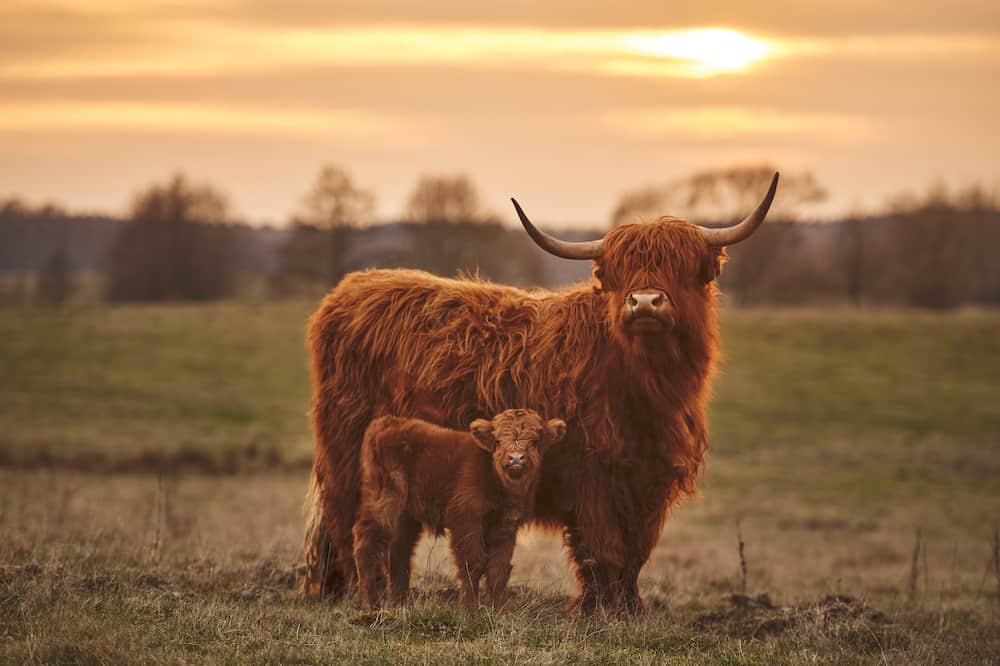
Although this process involved quite a few complex steps, it ensures the cattle access to bountiful food reserves of vegetation with little competition. It takes up to 100 hours to fully digest food, which is one of the slowest rates in the animal kingdom. This material will then be chewed over and swallowed again multiple times to fully break it down.

After the food is processed by the rumen, part of the vegetation will be regurgitated as cud. This chamber contains good beneficial bacteria that help the cattle digest food. The first chamber of the stomach, also known as the rumen, can hold a massive amount of food – in some cattle, more than 25 gallons. This allows the cattle to digest tough plant material that would be impossible or difficult for many other animals to consume. The signature feature of all cattle is the four-chamber stomach. Cows also have an udder on their abdomen from which the milk derives.

Bulls have horizontal horns with slightly bent tips, whereas the cows have mostly sweeping curved horns. Another key difference is the shape of the horns. Bulls can weigh anywhere between 1,500 and 2,000 pounds, while the cows typically weigh between 900 and 1,300 pounds. There are several important differences between them. Like all other cattle, the terms bulls and cows are used to distinguish the sexes. Interestingly, the cetaceans are closely related to even-toed ungulates, having evolved from semi-aquatic hippo-like creatures millions of years ago. Together this order represents all living even-toed ungulates – essentially, hoofed animals that bear weight equally on two toes. This family, in turn, is part of the order Artiodactyla, which is shared by pigs, camels, hippos, giraffes, deer, and much more. The first guidebook in 1885 described two different types of Highland cattle – a mainland type and an island type – but they’ve largely been crossbred into a single type with fewer distinct differences between them.Īll domesticated cattle belong to the family Bovidae, which also includes buffalo, sheep, goats, bison, and antelope. After thousands of years of evolution in the Scottish Highlands, this breed was finally standardized at some point in the 19th century. The breed likely descended from longhorn cattle brought to Britain in the second millennium BC. The Highland cattle, like all breed of cattle, belong to the species Bos taurus. This artificial selection went on for thousands of years, long before people really understood the genetic science behind it. This means that people bred the cattle’s individual traits and characteristics based on usefulness to human society. The Highland cattle is primarily a product of artificial selection.This is an adaptation shared by all breeds of cattle and many other hoofed mammals. The Highland cattle have horizontal pupils to keep track of potential predators coming from the periphery.This meat is sometimes highly sought after by meat connoisseurs for its quality. The Highland cattle produce leaner, tender meat compared to most other breed of cattle.But the Highland cattle also has many distinct features, including its sturdy constitution and incredibly long hair.

Judging by its behavior and physical characteristics, it is very much a quintessential cattle breed.

Originally hailing from the high elevations of the scenic Scottish Highlands, this breed is now raised worldwide for meat production. “ The Highland cattle are a rustic breed of the domesticated cattle species.“


 0 kommentar(er)
0 kommentar(er)
